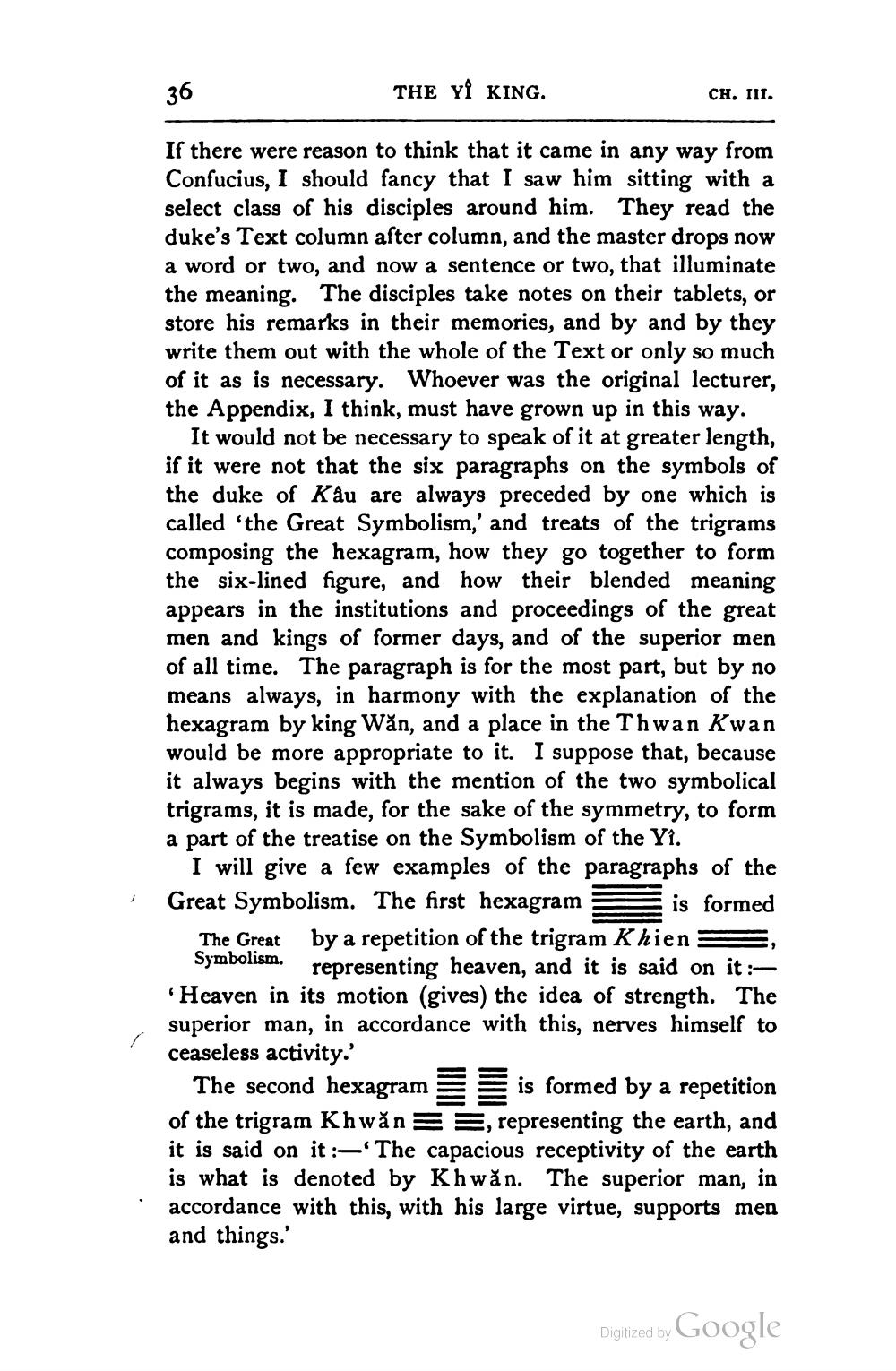________________
36
THE YI KING.
CH. III.
If there were reason to think that it came in any way from Confucius, I should fancy that I saw him sitting with a select class of his disciples around him. They read the duke's Text column after column, and the master drops now a word or two, and now a sentence or two, that illuminate the meaning. The disciples take notes on their tablets, or store his remarks in their memories, and by and by they write them out with the whole of the Text or only so much of it as is necessary. Whoever was the original lecturer, the Appendix, I think, must have grown up in this way.
It would not be necessary to speak of it at greater length, if it were not that the six paragraphs on the symbols of the duke of Kâu are always preceded by one which is called 'the Great Symbolism,' and treats of the trigrams composing the hexagram, how they go together to form the six-lined figure, and how their blended meaning appears in the institutions and proceedings of the great men and kings of former days, and of the superior men of all time. The paragraph is for the most part, but by no means always, in harmony with the explanation of the hexagram by king Wăn, and a place in the Thwan Kwan would be more appropriate to it. I suppose that, because it always begins with the mention of the two symbolical trigrams, it is made, for the sake of the symmetry, to form a part of the treatise on the Symbolism of the Yi.
I will give a few examples of the paragraphs of the Great Symbolism. The first hexagram B is formed
The Great by a repetition of the trigram Khien 3 , Symbolism.
representing heaven, and it is said on it: · Heaven in its motion (gives) the idea of strength. The superior man, in accordance with this, nerves himself to ceaseless activity.'
The second hexagram is formed by a repetition of the trigram Khwăn = =, representing the earth, and it is said on it :-'The capacious receptivity of the earth is what is denoted by Khwăn. The superior man, in accordance with this, with his large virtue, supports men and things.'
Digitized by Google




